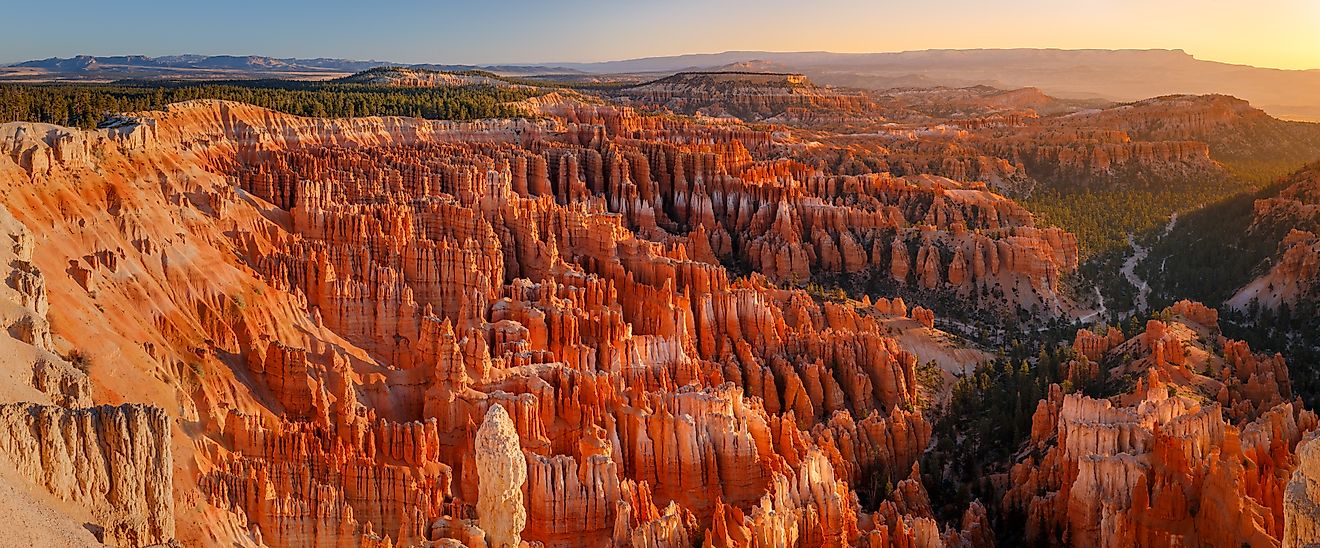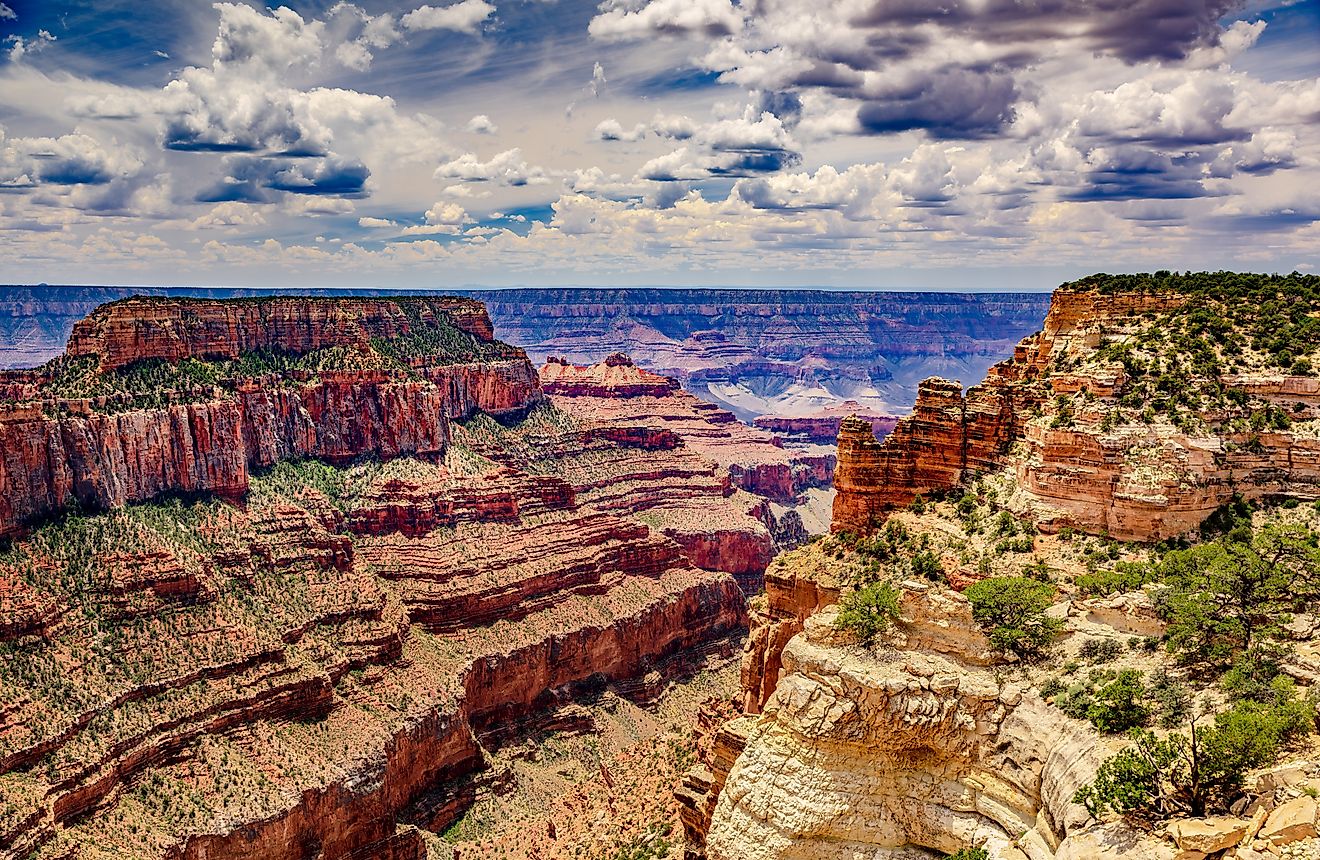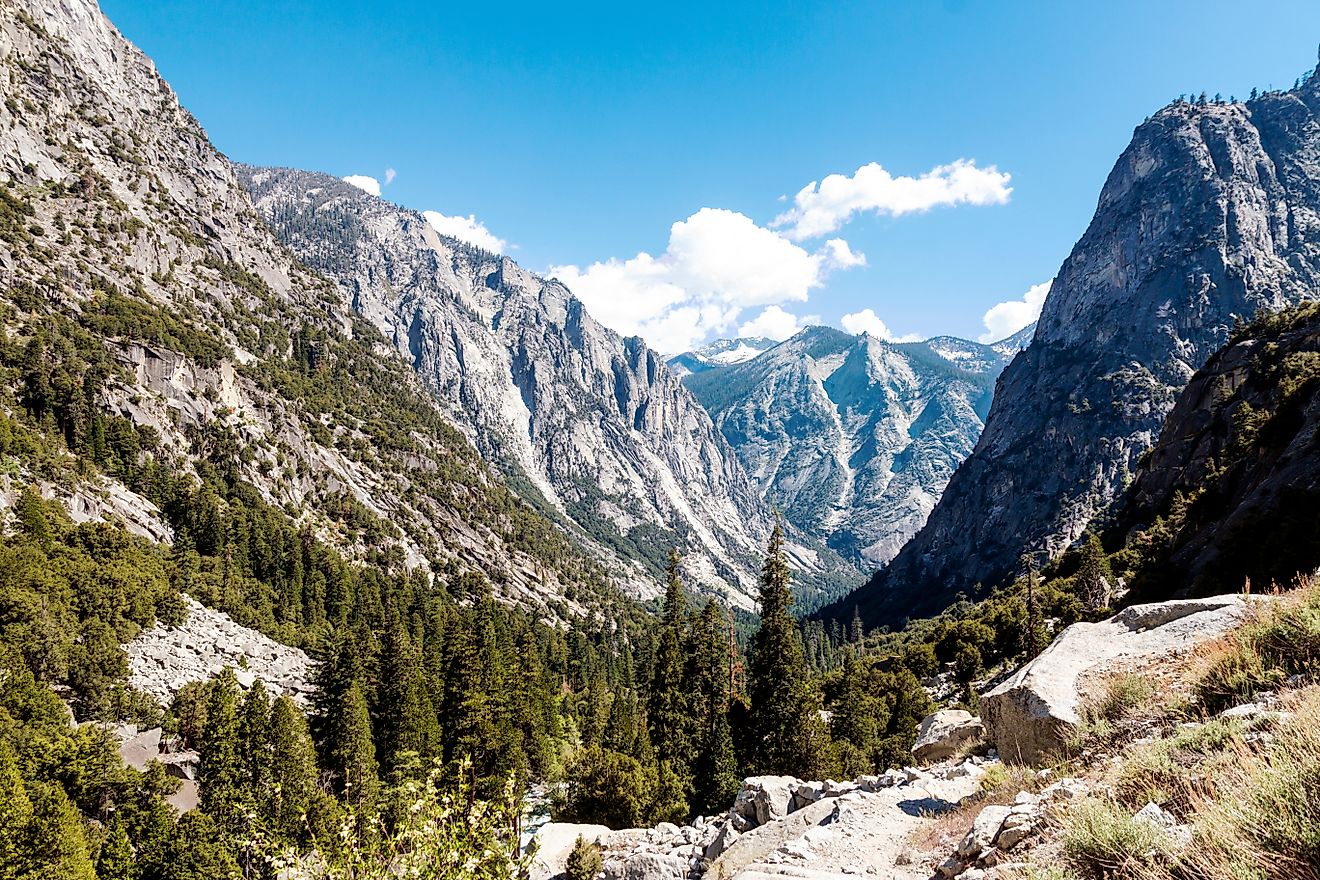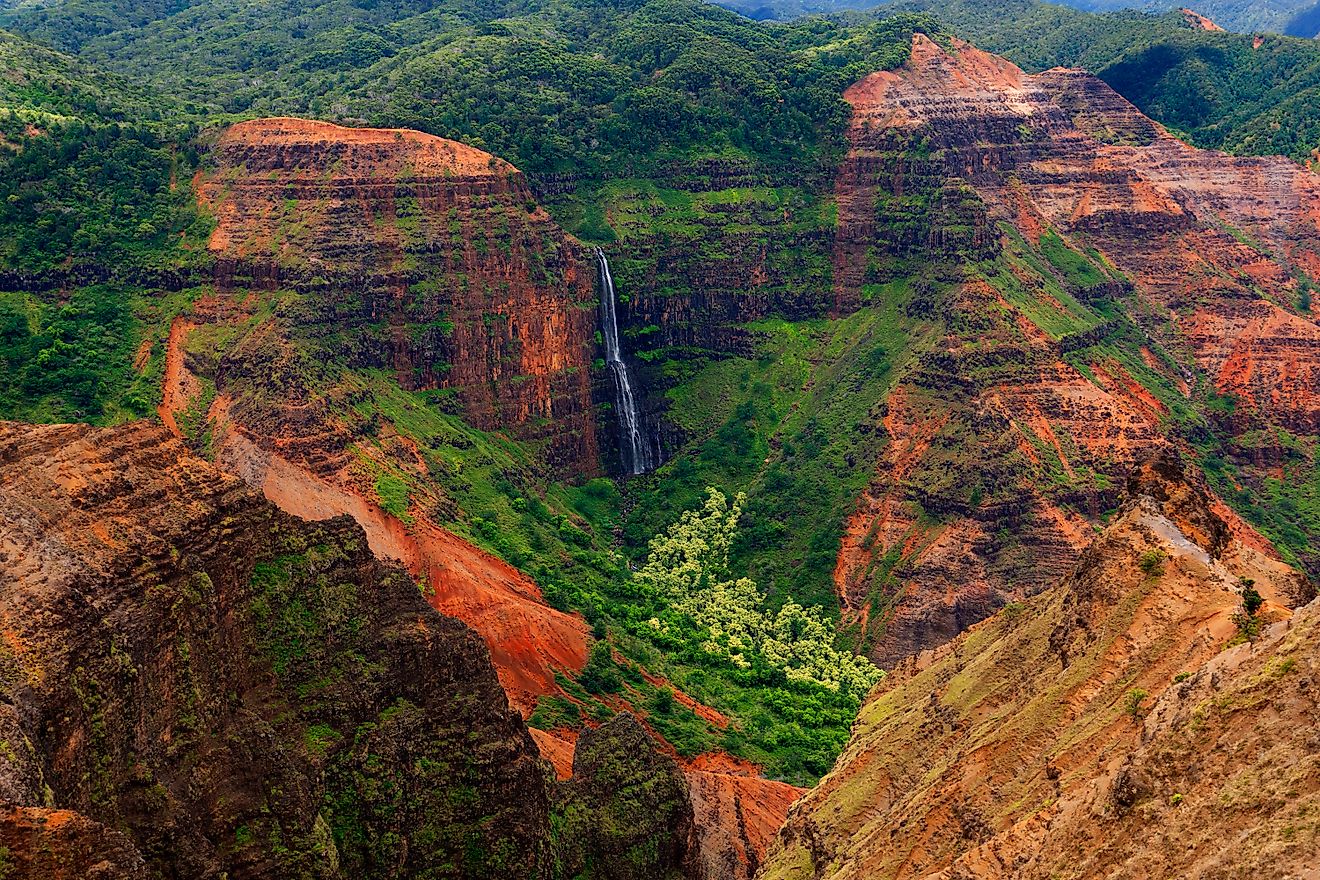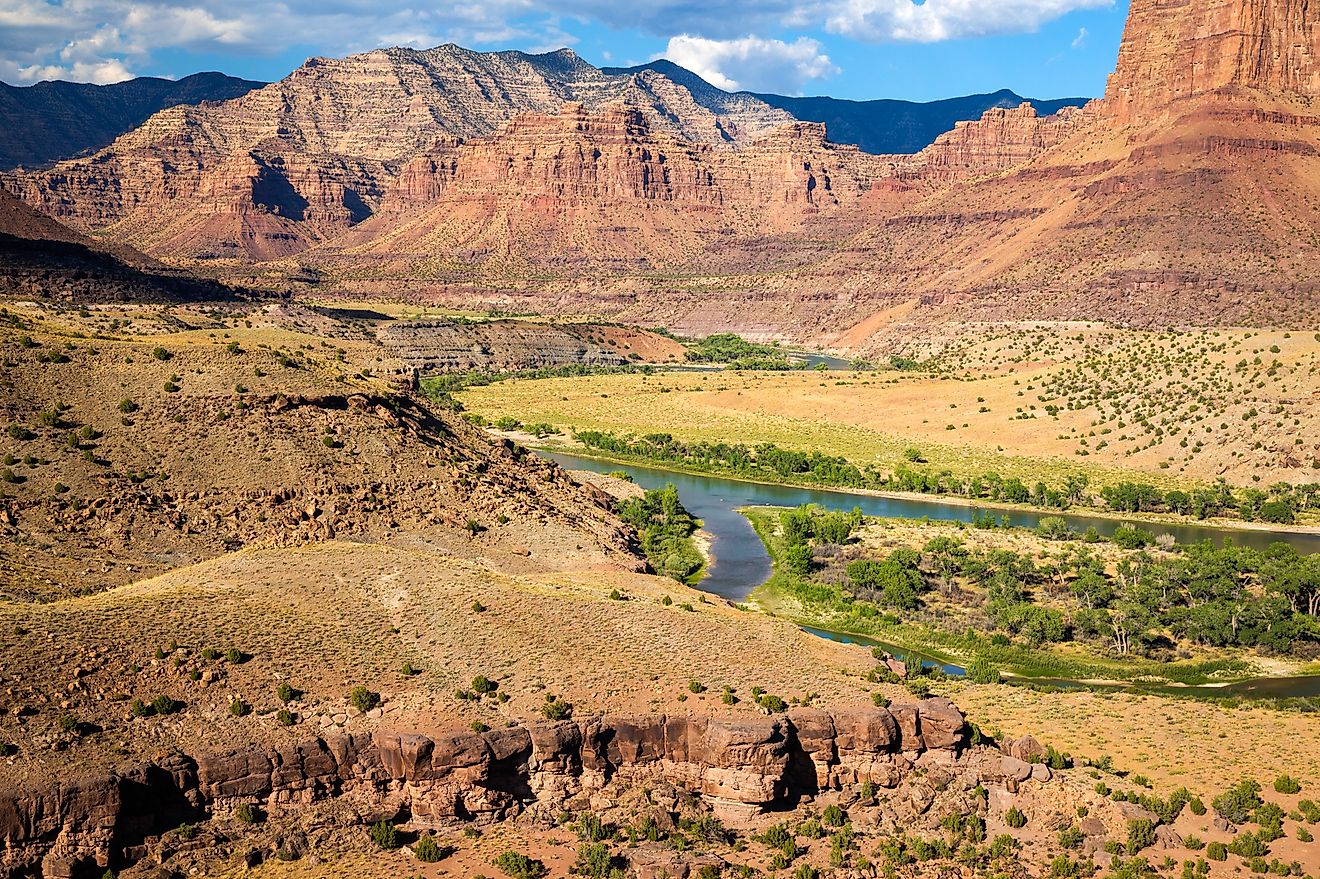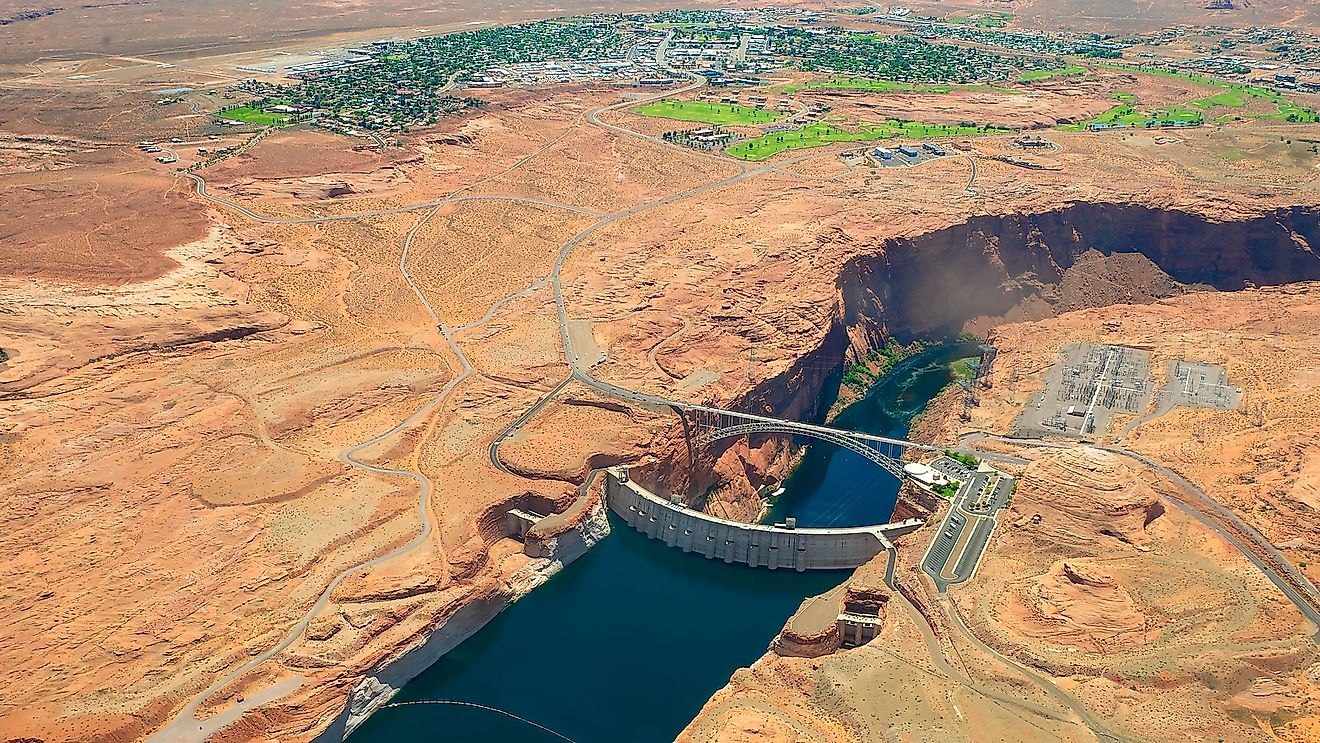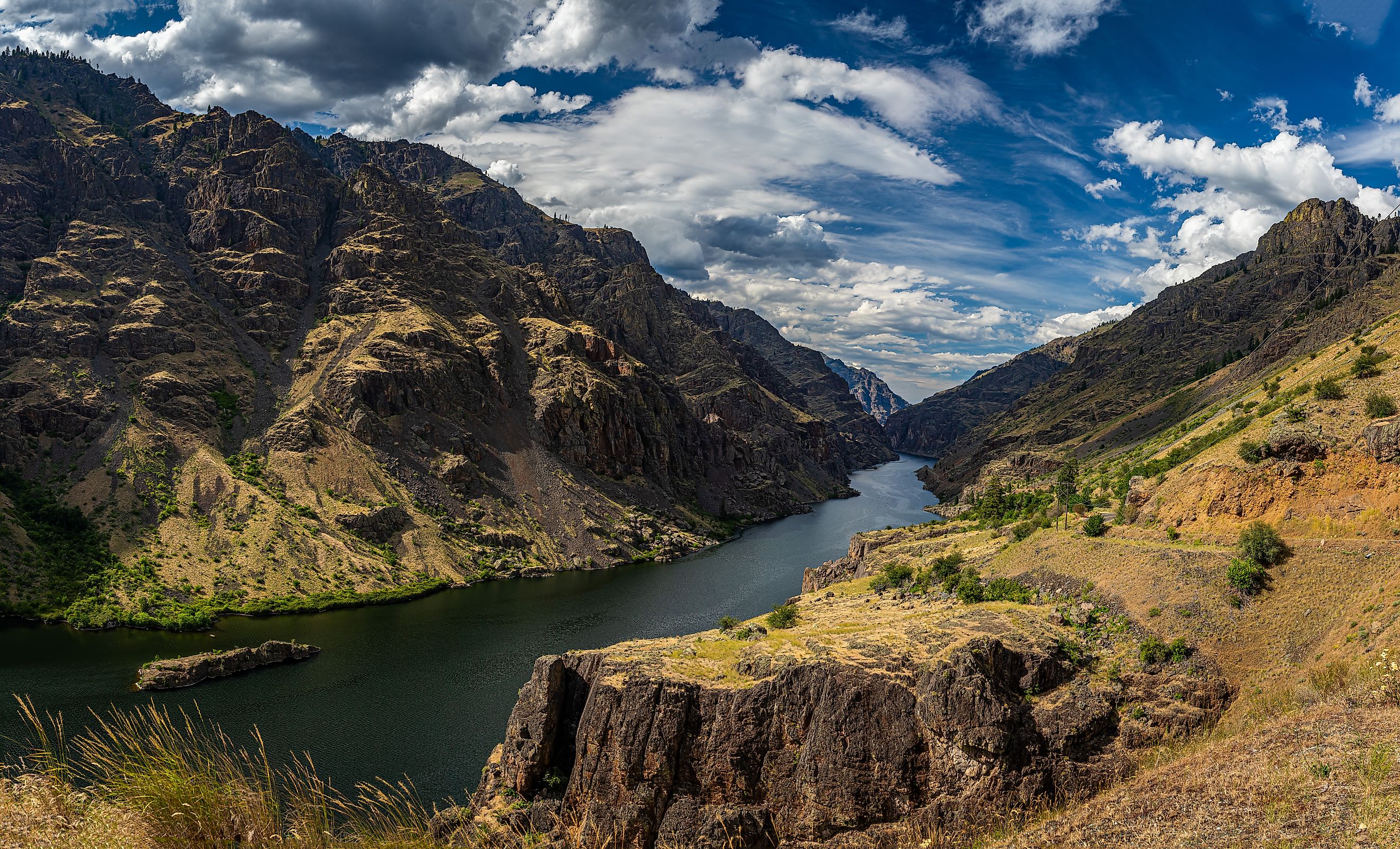
Hells Canyon
Tucked into the wild heart of the Pacific Northwest, Hells Canyon is a place where raw nature, dramatic geology, and deep history collide. Stretching 125 miles along the border of northeastern Oregon and western Idaho, Hells Canyon is carved by the relentless flow of the Snake River. With its steep rock walls and isolated beauty, it is the deepest river gorge in North America, plunging an astonishing 7,900 feet from rim to river in its most dramatic stretch.
Often overshadowed by the Grand Canyon in the American imagination, Hells Canyon is no less impressive—and in many ways, even more remote and untamed. It is a landscape of extremes: sheer cliffs painted in hues of yellow, red, and orange; whitewater rapids roaring through narrow rock chutes; and sprawling wilderness where elk, mountain goats, and black bears roam freely.
In short, Hells Canyon is one of America's best-kept secrets.
A Natural Wonder on the Edge of Two States

Hells Canyon serves as a natural boundary between Idaho and Oregon, separating the Seven Devils Mountains of Idaho from Oregon’s Wallowa Mountains. This jagged chasm was carved over millions of years by the Snake River, which continues to slice through the canyon's base, flowing north toward the Columbia River.
At its deepest, the gorge drops more than a mile—deeper than the Grand Canyon—though it is narrower and more rugged in profile. For roughly 40 miles, the canyon maintains this extreme depth, offering a dramatic setting for river expeditions, wilderness hiking, and panoramic views unlike anywhere else in the country.
The Making of Hells Canyon
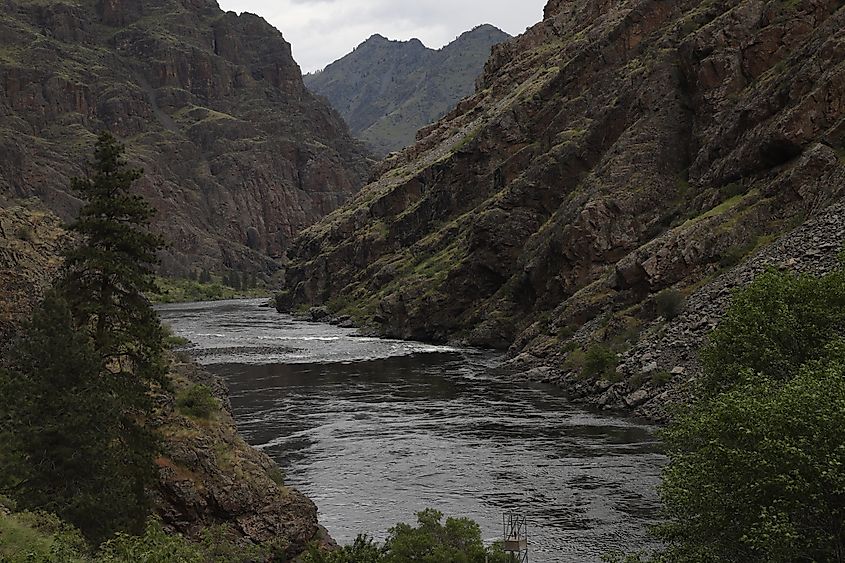
Geologically speaking, Hells Canyon is a showcase of violent forces. The region’s complex formation includes volcanic activity, tectonic uplift, and the persistent sculpting of the Snake River over millions of years. The resulting terrain is steep, forbidding, and laced with exposed rock layers that span hundreds of millions of years in Earth’s history.
The canyon’s colorful walls—ranging from ochre yellows to rust-reds—reveal basalt flows and sedimentary layers that tell the story of an ever-changing landscape. In places, the walls rise perpendicularly for thousands of feet, giving the canyon an intimidating grandeur.
A Controversial Past
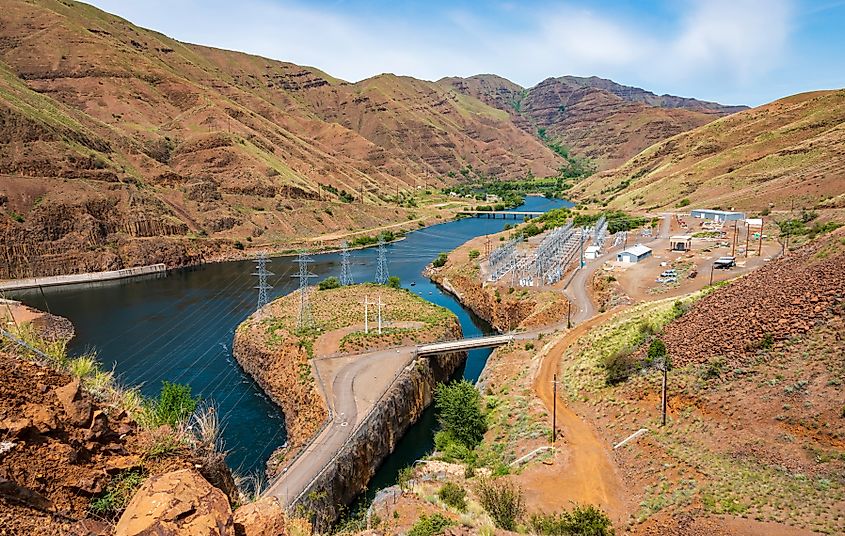
The wild Snake River that carved Hells Canyon was once a volatile force prone to flooding. In the mid-20th century, the question of whether to harness its energy sparked a major debate between private enterprise and federal power interests.
Ultimately, the Idaho Power Company succeeded in developing the river, constructing three major dams in the area:
-
Brownlee Dam (1959)
-
Oxbow Dam (1961)
-
Hells Canyon Dam (1968)
These hydroelectric projects changed the ecology and flow of the river, curbing seasonal floods downstream in the Columbia River system and creating reservoirs used for power generation and recreation. However, they also cut off salmon migration routes and transformed the once-unbroken river corridor into a stepped system of lakes and rapids.
Hells Canyon National Recreation Area
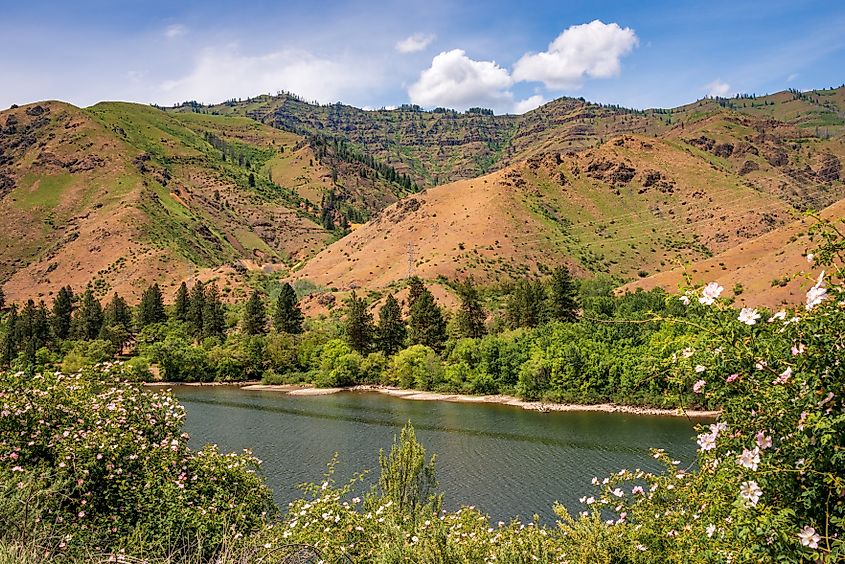
Recognizing the canyon’s unmatched ecological and scenic value, Congress established the Hells Canyon National Recreation Area (HCNRA) in 1975. Managed primarily by the Wallowa-Whitman National Forest, the area encompasses 652,488 acres of protected land, spreading across parts of Oregon’s Wallowa County and Idaho’s Nez Perce and Payette National Forests.
The same year, 67 miles of the Snake River below Hells Canyon Dam were designated a National Wild and Scenic River, preserving its free-flowing character and protecting it from further dam development.
Today, the HCNRA is a haven for outdoor adventurers, nature lovers, and history seekers.
Hells Canyon Wilderness
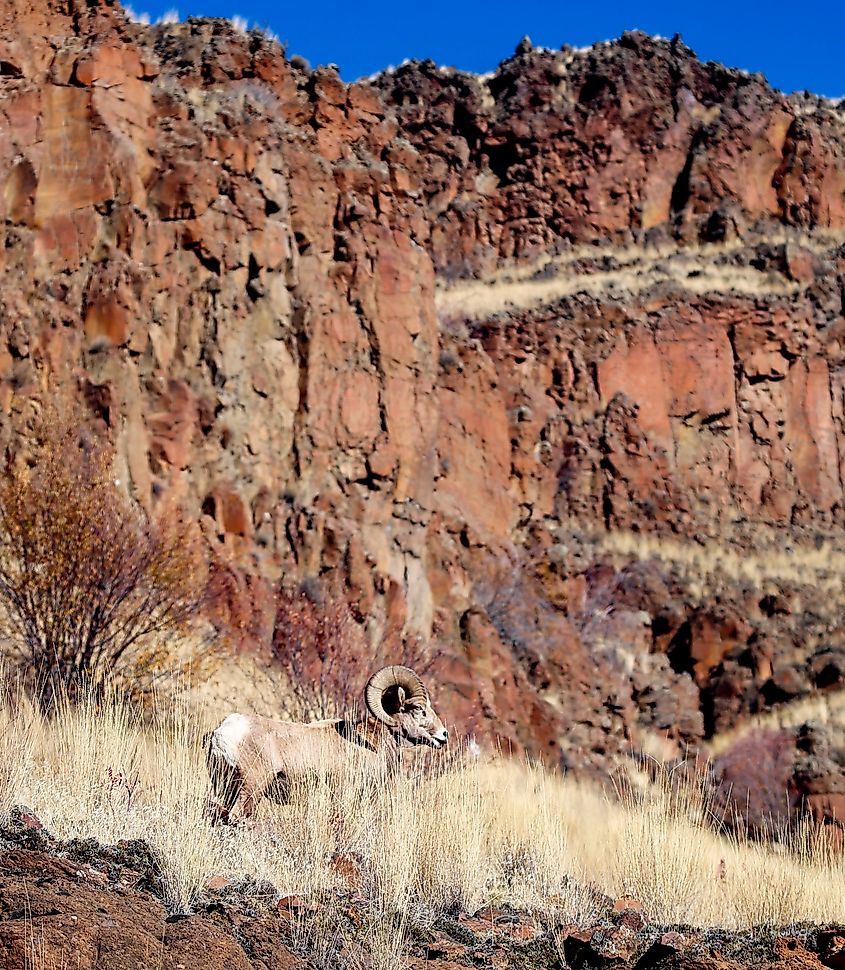
Within the recreation area lies the Hells Canyon Wilderness, a massive swath of protected land totaling over 216,981 acres. This designated wilderness straddles the state line and includes some of the canyon’s most remote and rugged terrain.
Here, there are no roads, no structures, and few signs of modern civilization. Hiking and horseback trails lead to high mountain peaks, rimrock ledges, and alpine meadows, offering solitude and sweeping views of the gorge below.
Wildlife is abundant. Visitors may spot bighorn sheep, black bears, elk, cougars, and even golden eagles soaring above the cliffs. The area is also home to important cultural sites, with petroglyphs, tools, and remnants of early Native American tribes, as well as the relics of 19th-century miners and ranchers.
Recreation in the Canyon
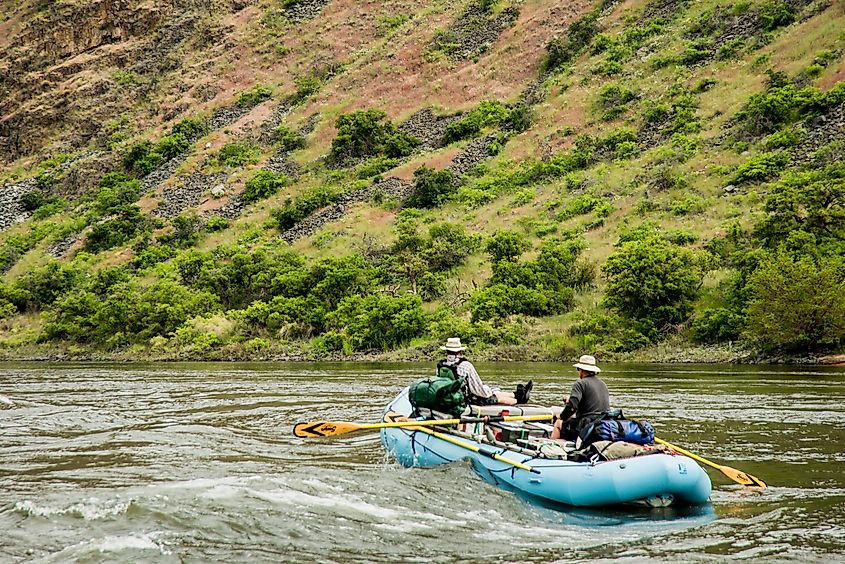
The vast expanse of Hells Canyon offers a staggering array of recreational opportunities, from world-class whitewater rafting to backcountry hiking, fishing, camping, and even backcountry aviation.
Snake River Adventures
The Snake River itself is the crown jewel of the recreation area. It winds its way through the deepest part of the canyon and offers some of the most exciting river trips in the country. Depending on the season, visitors can take on anything from calm floats to challenging rapids on guided or self-guided trips.
Fishing is also popular in the river’s deep pools and eddies, with species including smallmouth bass, sturgeon, and trout.
Hiking and Horseback Riding
Hikers can explore dozens of trails that range from short rim walks to multi-day backpacking treks. Notable trails include:
-
Hat Point Lookout Trail – A steep drive up Oregon’s side with stunning views into the canyon.
-
Saddle Creek and Freezeout Trailheads – Access to canyon bottoms and remote campsites.
-
Heaven’s Gate Lookout – On the Idaho side, this site provides a 360-degree view of the canyon and Seven Devils Mountains.
Airstrips and Remote Access
For the truly adventurous, backcountry airstrips allow small aircraft access to some of the most remote parts of the canyon and uplands. These strips are open to commercial and public use and offer a unique way to explore the rugged terrain from above.
People of the Canyon

Long before European settlers arrived, the Hells Canyon area was home to Native American tribes, including the Nez Perce. Evidence of their presence can still be seen in petroglyphs, campsites, and hunting tools found throughout the canyon.
During the 1800s, fur trappers, miners, and homesteaders made their way into the region. Many tried—and failed—to tame its steep slopes and remote corners. Abandoned cabins and equipment remain scattered along the riverbanks and trails, offering a glimpse into the harsh realities faced by early settlers.
Today, these cultural sites are protected, and visitors are encouraged to view but not disturb these artifacts, honoring the people who once lived and struggled in this formidable land.
Visiting Hells Canyon
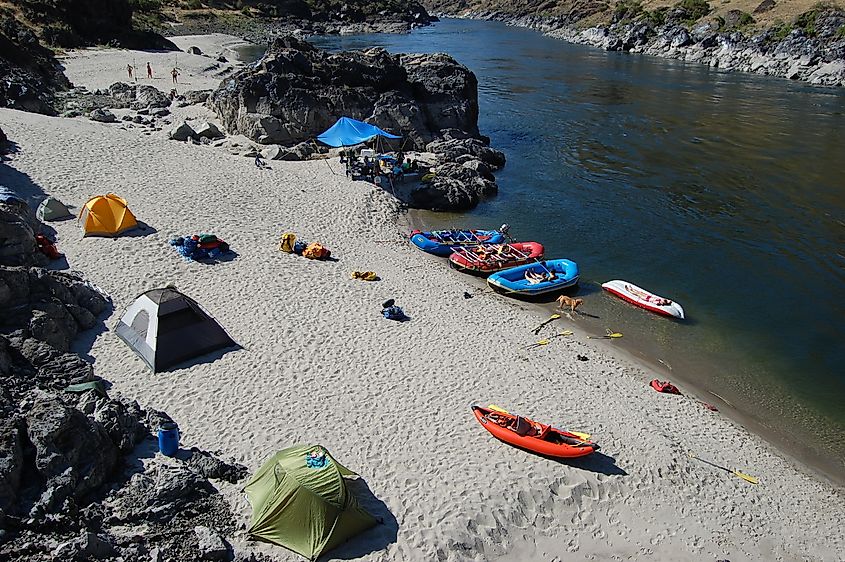
Because of its remote location, visiting Hells Canyon requires planning. There are no major cities within the canyon, and access roads can be steep, narrow, and seasonal.
Best Time to Visit
-
Spring and early summer (May–June): Great for wildflowers and river trips.
-
Fall (September–October): Crisp weather, golden foliage, and fewer crowds.
-
Winter: Many roads are impassable, but experienced backcountry adventurers may explore the area via snowshoe or ski.
How to Get There
-
From Oregon: Access via Joseph and the Wallowa Valley, with road routes to Hat Point Overlook and nearby trailheads.
-
From Idaho: Reach the canyon rim via Riggins or Cambridge, and explore access roads to Heaven’s Gate and Hells Canyon Dam.
A Wild Slice of the American West
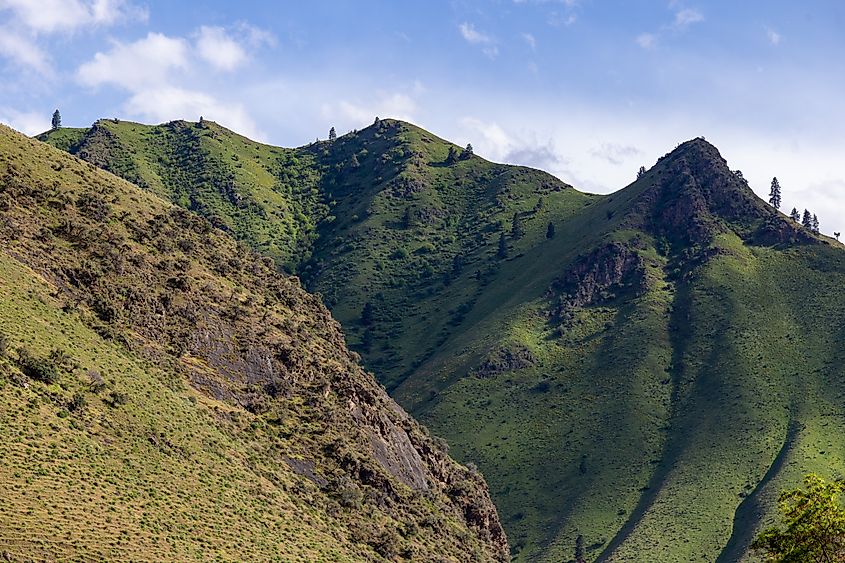
Hells Canyon isn’t just the deepest gorge in North America—it’s a journey into one of the most powerful and dramatic landscapes in the country. With its mix of rugged wilderness, rich history, and adrenaline-packed recreation, it offers an experience unlike any other.
Whether you're paddling the Snake River, gazing into the abyss from a canyon overlook, or hiking ancient trails through remote wilderness, Hells Canyon leaves a lasting impression. It’s a reminder of how wild and untamed the American West still is—and how much of it remains to be discovered.
Quick Facts:
-
Depth: Up to 7,900 feet
-
Length: 125 miles
-
Location: Border of Oregon and Idaho
-
Established: National Recreation Area in 1975
-
Main Features: Snake River, Hells Canyon Wilderness, Wallowa-Whitman National Forest
